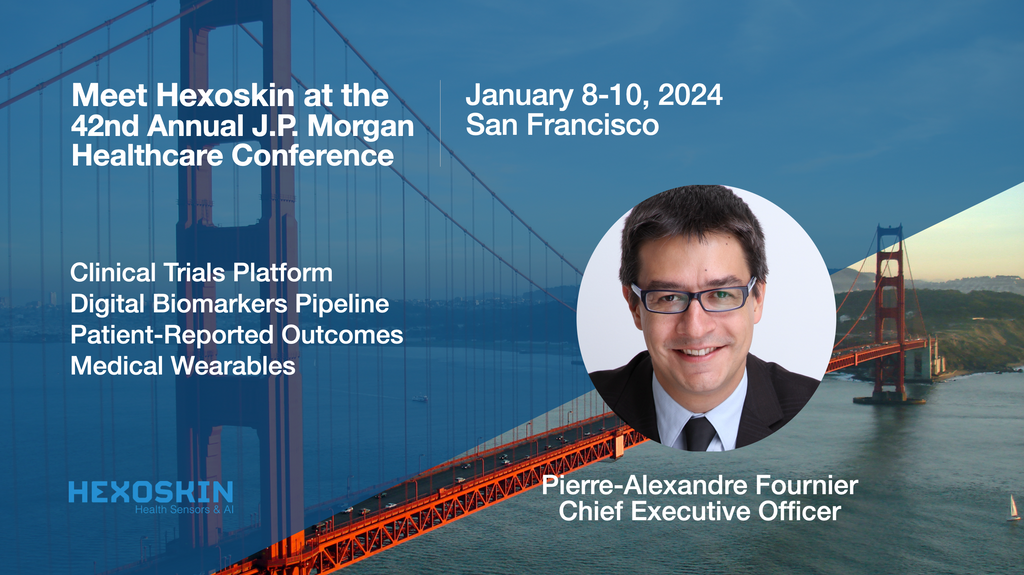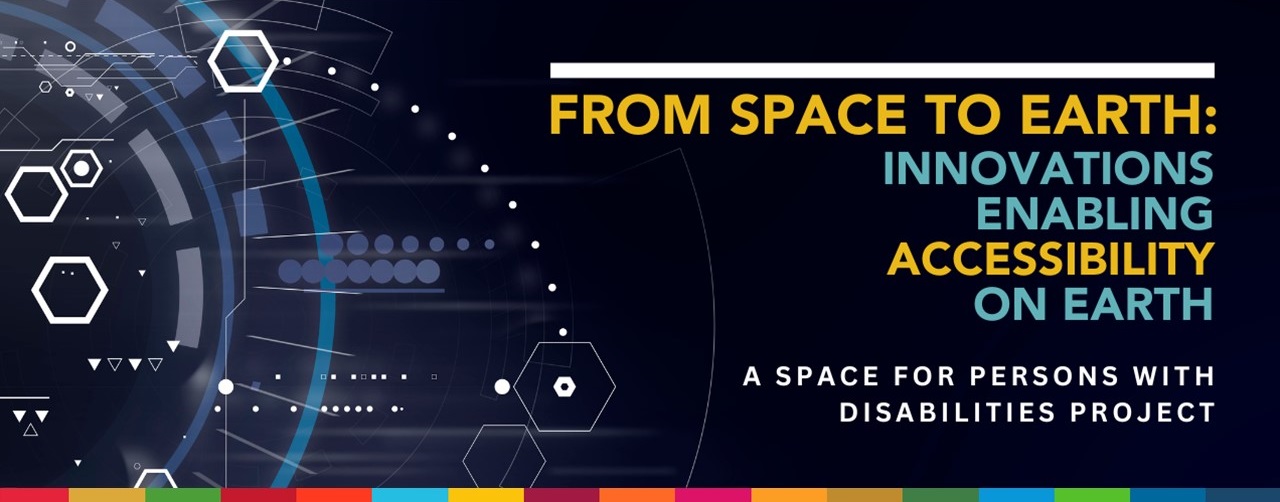- Continue Shopping
- Your Cart is Empty
Hexoskin to Present at the HITLAB Innovation Summit 2025
Hexoskin's CEO Pierre-Alexandre Fournier is going to present our latest work in AI and digital biomarker development for clinical trials at the HITLAB Innovators Summit 2025 this December 2-4 in New York City.
Hexoskin @ HLTH 2025
Hexoskin will be presenting its latest products and clinical advancements at HLTH USA 2025 next week in Las Vegas.
We'll take the opportunity to meet with our clients and partners who use the Hexoskin software platform and wearables to advance our knowledge of human physiology.
We'll also present our new Hexoskin OneView platform for research and our digital biomarker pipeline in cardiology, respiratory diseases, nervous system disorders, and rare diseases.
Contact us to book a meeting: contact@hexoskin.com
Hexoskin Unveils Breakthrough Cough Detection AI Algorithm in Computers in Biology and Medicine Journal
Hexoskin’s Artificial Intelligence team has published this week a breakthrough study in Computers in Biology and Medicine, introducing a novel algorithm for automatic cough detection in real‑world settings. Unlike traditional methods, our approach preserves patients’ speech privacy and excels even in noisy environments.
This novel AI detection model was developed using physiological recordings from Hexoskin smart garments, a Digital Health Technology (DHT) wearable cardiac, respiratory, and activity sensor. The model delivers best‑in‑class performance with an area under the ROC curve (AUC) of 95.2 %, sensitivity of 98.5 %, and specificity of 91.9 %. This level of accuracy meets the stringent requirements for cough clinical trial endpoints.
Passive and objective cough measurement devices like Hexoskin smart garments can report outcomes for patients living with respiratory conditions such as asthma and COPD. Because Hexoskin Smart Clothing can be used in clinical trials at home, enabling remote patient monitoring, patients can be monitored for their respiratory condition during daily activities and sleep. AI-based cough detection can provide a detailed analysis of the frequency of cough events, combined with other clinical trial endpoints.
“Detecting coughs accurately without capturing speech content is essential for both patient privacy and clinical utility,” said Dr. Philippe Dixon, lead author of the study and assistant professor at McGill University. “Our model’s robustness to ambient noise makes it an ideal tool for home‑based monitoring and telemedicine applications, key aspects of remote respiratory monitoring.”
This announcement represents the latest advance in Hexoskin’s expanding clinical AI portfolio. In parallel with ongoing clinical trials, Hexoskin leverages the world’s largest physiological database—accumulated through years of wearable sensor deployments—to accelerate the development of AI‑driven tools for patient monitoring and diagnostics.
Here's an excerpt from the paper's abstract:
Coughing behavior is associated with conditions such as sleep apnea, asthma, and chronic obstructive pulmonary disorder (COPD) and can severely affect quality of life in those affected. In this context, coughing quantification is often important, but routinely performed via questionnaires. This approach is dependent on patient compliance or recall, which may affect validity and be especially difficult for nocturnal coughs. Manual review of audio recordings is potentially more accurate, but raises adherence and privacy concerns due to the collection and review of sensitive audio-data by a human annotator. Today, machine learning approaches are increasingly used to quantify coughs; however, algorithms often rely on microphone recordings, resulting in the same privacy issues, especially if data are sent to a remote server for analysis.
Hexoskin's open platform is used by hundreds of researchers for data collection for new digital biomarkers and AI development. Hexoskin is also working with foundations, pharmaceuticals, and biotechnology to speed the clinical development of respiratory diseases and other cardiac, neurological, and rare diseases, developing primary and secondary endpoints for clinical development. We also collaborate on digital biomarkers for patient monitoring and find new cures.
Contact our team today to collaborate on the future of clinical development and AI in healthcare.
HITLAB September 2024 Symposium on September 26
Hexoskin's CEO Pierre-Alexandre Fournier will be speaking at the HITLAB Digital Health Symposium on Digital Health this September 26th. The event will be streamed online and is free to attend.
Along with speakers from Genentech, Pfizer, Merck, Samsung, and many other innovative companies in health technologies and life sciences, Fournier will discuss the current state of digital biomarkers, wearables, and articificial intelligence in medicine.
For more than 20 years, HITLAB (Healthcare Innovation & Technology Lab) has been at the forefront of digital health research. The Columbia University-based organization partners with innovative healthcare technologies and life sciences companies to improve global health delivery and healthcare worldwide. HITLAB uses rigorous research and evidence-based methods to identify the best digital health solutions for their partners.
HITLAB Virtual Session: the Impact of Wearable Technology on Digital Diagnostics
Today we attended the 6th session of HITLAB's BT1 Virtual Knowledge Convene to discuss "The Impact of Wearable Technology on Digital Diagnostics". This was an opportunity to talk and discuss about the past, present, and future of medical wearables with Columbia University's HITLAB international community.
A few of the topics we covered:
• How wearables are revolutionizing healthcare data collection
• The potential of wearables for early disease detection and remote patient monitoring
• The future of personalized medicine powered by wearable tech.

Mayo Clinic Seminar on Wearables and Digital Biomarkers in Neuroscience
Our CEO Pierre-Alexandre Fournier was invited by Mayo Clinic to give a seminar on medical wearables and digital biomarkers this week. Thanks again to Dr Jonathon J. Parker, MD PhD, Teryn Johnson, Ph.D., and Bobby Mohan from the Neurosurgery department for organizing the event!
We had the chance to share details about many Hexoskin projects , including our collaboration with Centre de recherche du CHUM (CRCHUM) on epilepsy research, and R&D on respiratory and rare diseases.
We also discussed the importance of running the right trials to validate the digital biomarkers that make medical wearables valuable in different care settings, e.g. before, during, and after hospitalizations. Convincing data from these trials are essential to get through regulatory, reimbursement, and adoption challenges.

Hexoskin @ 2024 JP Morgan Conference
Hexoskin will be in San Francisco again this year during the 42nd Annual J.P. Morgan Healthcare Conference, the largest life sciences investment event in the world.
We'll take the opportunity to meet with our clients and partners who use the Hexoskin software platform and wearables to advance our knowledge of human physiology.
We'll also present our new Hexoskin OneView platform for research and our digital biomarker pipeline in cardiology, respiratory diseases, nervous system disorders, and rare diseases.
Contact us to book a meeting: contact@hexoskin.com

UNOOSA Webinar on Nov 9th 2023
The UNOOSA (United Nations Office of Outer Space Affairs) has invited Hexoskin's CEO Pierre-Alexandre Fournier to speak about medical research conducted aboard the International Space Station with Astroskin wearable sensors.
The webinar entitled "From Space to Earth: Innovations enabling accessibility on Earth" was live on Thursday November 9th, 2023, you watch a recording of the event here.
There are less than 700 astronauts who have visited space from the time Yuri Gagarin reached orbit for the first time in 1961 to now in 2023. Most of these astronauts were selected to have none or few health conditions.
With space more accessible than ever, we expect thousands of people to visit space in the coming decades on suborbital and orbital flights. Many of these new astronauts who will visit space to work or as travellers will have health conditions or disabilities.
Health research conducted in the space station today with Astroskin health sensors helps better understand the risks and mitigation strategies to make space more accessible. It also helps better understand the effects of aging on human performance: microgravity has effects on the cardiovascular and musculoskeletal systems analog to accelerated aging.
About the UNOOSA
The United Nations Office for Outer Space Affairs (UNOOSA) works to promote international cooperation in the peaceful use and exploration of space, and in the utilisation of space science and technology for sustainable economic and social development. The Office assists any United Nations Member States to establish legal and regulatory frameworks to govern space activities and strengthens the capacity of developing countries to use space science technology and applications for development by helping to integrate space capabilities into national development programmes.
Hexoskin at Biosensors for Medical Wearables 2023 in Boston: Non-adhesive, flexible wearable sensors for pulmonary medical applications
Hexoskin's co-founder and CEO Pierre-Alexandre Fournier has been invited this year again to talk about wearable vital signs monitoring and digital biomarker development at the Biosensors for Medical Wearables Conference in Boston, this October 23rd.

Vital signs sensors traditionally used for cardiac and respiratory monitoring involve adhesives or tape to keep sensors in place on the skin. Experience has shown there's a tradeoff between monitoring duration (1 to 14 days), and adhesive agressiveness, which can lead to skin rashes or wounds.
There's now a safer and more convenient way for patients to record long-term vital signs data needed for diagnosis or digital biomarker development: smart textiles. Hexoskin users have successfully demonstrated the advantages of using a form factor that patients like. Researchers have documented it in over 200 scientific papers.
Moreover, Hexoskin biometric shirts' respiratory sensors allow continuous pulmonary measurements previously hard or impossible to collect in real-world situations, outside laboratory environments. These sensors open a new era of research on diseases that have an impact on the pulmonary function.
In his talk, Fournier will describe medical applications of smart textile sensors for patients with respiratory diseases, as well as opportunities in research in cardiology, mental health and rare diseases. He will also share unique insights into Hexoskin's experience in space medicine research aboard the International Space Station.
Please reach out for more information: contact@hexoskin.com
Interview with HITLAB on Medical Data Infrastructure, Automation and AI
In this video interview with HITLAB at Columbia University in New York, Hexoskin's CEO Pierre-Alexandre Fournier discusses how fundamental building medical data infrastructure was to enable automation and AI - tools to make healthcare delivery more efficient and more accessible.
The lack of electronic medical records and data standards has slowed progress in digital health and AI in the 2000s and 2010s. Today the infrastructure is ready to make data collected by patients actionable and valuable.
This new IT environment (EHR/EMRs, broadband, FIRH, HL7, smart phones, and wearables) accelerates automation and AI development, digital biomarker discovery, personalized medicine and new health prevention services.
Hexoskin is building on this infrastructure to offer high-resolution vital signs monitoring with Hexoskin and Astroskin wearables, apps to collect patient reported outcomes and events, could storage, data automation and cohort management.
Please reach out to see how Hexoskin can help.





